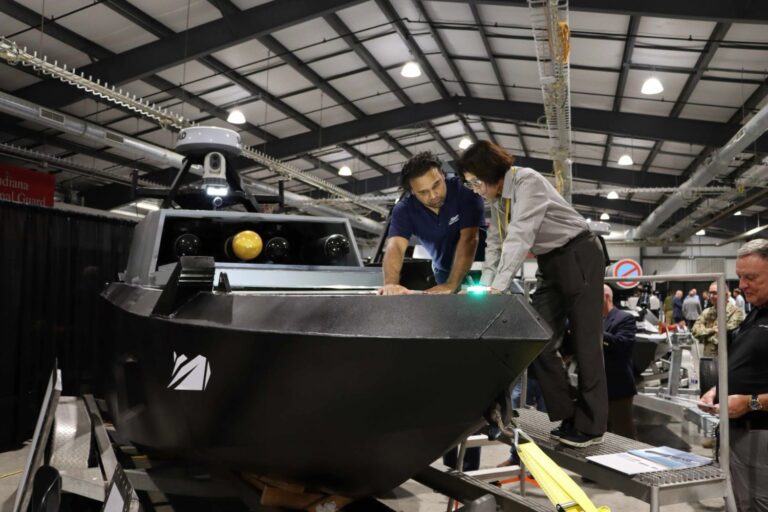Air Industries Group Secures Largest Contract in Company’s History: $110 Million for GTF Aircraft Engine Components
BAY SHORE, N.Y. – Air Industries Group (“Air Industries”) (NYSE American: AIRI), a leading manufacturer of precision components and assemblies for large aerospace and defense prime contractors, today announced that it has received a $110 million, 7-year contract for the production of Thrust Struts used in the Geared Turbo-Fan (GTF) aircraft jet engine. Air Industries has been the sole supplier of this critical component since 2015.
“Following the recent Farnborough Air Show, we remain focused on business development activities, strengthening our relationships with long-standing customers, and building new partnerships.”
The new contract will commence in January 2025 and extend through 2031 replacing and expanding on an existing contract set to expire in December of 2024. Once production and deliveries begin, annual sales are expected to benefit significantly.
Lou Melluzzo, Chief Executive Officer of Air Industries Group commented: “This contract is a milestone for our company, underscoring the significance of our Thrust Struts product line, which has been a cornerstone of our business for nearly a decade. With this single order, our backlog has surged to over $280 million, marking the first time our backlog has exceeded a quarter of a billion dollars. This order will significantly impact our top and bottom lines, with this project alone expected to require approximately 40,000 hours of production annually at our Long Island manufacturing facility.”
Melluzzo added, “This product is manufactured on highly specialized machines that are challenging to procure. This order will be supported by our strategic decision to previously invest in upgrades and significant enhancements to our machinery and equipment. No GTF engine can be fitted to an airframe without a pair of Thrust Struts, making this a critical component in the aerospace supply chain.”
In conclusion, Melluzzo stated, “Following the recent Farnborough Air Show, we remain focused on business development activities, strengthening our relationships with long-standing customers, and building new partnerships.”
Peter Rettaliata, Chairman of the Board of Air Industries, commented, “This remarkable achievement is a testament to the focused and strategic efforts of Lou and his team. Their hard work has not only strengthened our relationship with a key customer but has also delivered significant win to our shareholders. This accomplishment reflects the collective dedication and expertise of our entire team. On behalf of the Board of Directors and our shareholders, I extend my sincere congratulations and gratitude.”
ABOUT AIR INDUSTRIES GROUP
Air Industries Group is a leading manufacturer of precision components and assemblies for large aerospace and defense prime contractors. Its products include landing gears, flight controls, engine mounts and components for aircraft jet engines, ground turbines and other complex machines. Whether it is a small individual component or complete assembly, its high quality and extremely reliable products are used in mission critical operations that are essential for the safety of military personnel and civilians.
FORWARD LOOKING STATEMENTS
Certain matters discussed in this press release are ‘forward-looking statements’ intended to qualify for the safe harbor from liability established by the Private Securities Litigation Reform Act of 1995. In particular, the Company’s statements regarding trends in the marketplace, future revenues, earnings and Adjusted EBITDA, the ability to realize firm backlog and projected backlog, cost cutting measures, potential future results and acquisitions, are examples of such forward-looking statements. The forward-looking statements are subject to numerous risks and uncertainties, including, but not limited to, the timing of projects due to variability in size, scope and duration, the inherent discrepancy in actual results from estimates, projections and forecasts made by management, regulatory delays, changes in government funding and budgets, and other factors, including general economic conditions, not within the Company’s control. The factors discussed herein and expressed from time to time in the Company’s filings with the Securities and Exchange Commission could cause actual results and developments to be materially different from those expressed in or implied by such statements. The forward-looking statements are made only as of the date of this press release and the Company undertakes no obligation to publicly update such forward-looking statements to reflect subsequent events or circumstances.
NON-GAAP FINANCIAL MEASURES
The Company uses Adjusted EBITDA, a Non-GAAP financial measure as defined by the SEC, as a supplemental profitability measure because management finds it useful to understand and evaluate results, excluding the impact of non-cash depreciation and amortization charges, stock based compensation expenses, and nonrecurring expenses and outlays, prior to consideration of the impact of other potential sources and uses of cash, such as working capital items. This calculation may differ in method of calculation from similarly titled measures used by other companies and may be different than the EBITDA calculation used by our lenders for purposes of determining compliance with our financial covenants. This Non-GAAP measure may have limitations when understanding performance as it excludes the financial impact of transactions such as interest expense necessary to conduct the Company’s business and therefore are not intended to be an alternative to financial measure prepared in accordance with GAAP. The Company has not quantitatively reconciled its forward looking Adjusted EBITDA target to the most directly comparable GAAP measure because items such as amortization of stock-based compensation and interest expense, which are specific items that impact these measures, have not yet occurred, are out of the Company’s control, or cannot be predicted. For example, quantification of stock-based compensation is not possible as it requires inputs such as future grants and stock prices which are not currently ascertainable.








